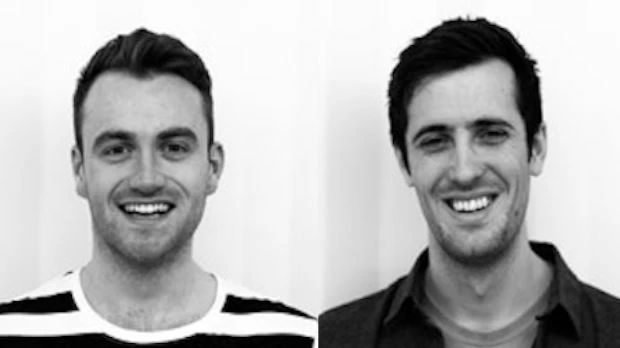
Partner Article
What does the future hold for 3D printing?
3D printing is the hot new ticket in the manufacturing world. NASA is doing it to test rocket engine parts, Maplin just launched the first 3D printer on the high street, and researchers in the U.S. recently advanced the process by printing a liquid metal structure using an alloy of gallium and indium.
In fact, the 3D printer is set to revolutionise the way “things“ are made, as well as the development process that leads up to manufacturing. While there is much excitement around the process, there could be some draw backs if UK laws don’t keep up with 3D printing progress.
Bdaily spoke to Henry James, co-founder of Manchester-based product design and innovation studio, Inventid, about how 3D printing is used within their business, and the implications of advances within the process:
“We’re product designers, and 3D printing is sort of a caliper in our process. We find ways of solving either traditional or new problems through product means. We help everyone from the individual inventor all the way up to huge multi-national brands.
“Once we’ve gone through a whole bunch of development, sketching, researching…we’ll use 3D printing to take our ideas and make mock ups and prototypes…It’s just made our process a lot more fluid, relaxed, responsive.”
“Now we can quickly test a part and see how it works, sketch on top of it and make quick “nip and tuck” changes. It becomes very rough and ready, malleable, and we can change on the fly.”
With 3D printers now available on the high street (for £700 a pop, it must be said), does that mean we’ll all be making teapots and custom-made jewelry in our homes? And what are the implications of such a tool being made open to the masses.
Henry explained more about how he sees the future of 3D printing:
“I think 3D printing in the home will be an enthusiast thing. People’s ability to design and create and make alterations is a really cool thing, and I think 3D printing will assist that, and as price comes down, the equipment will become more widespread.
“To say everyone’s going to have one? I don’t know. They might do but I don’t know where they’re going to get that much use out of them.
“I imagine a much more natural situation would be to have a 3D printer, say in a local coffee shop, where people can go and spend some money, get something replicated and come away with a object.”
There are further implications around making 3D printing widely available, as it would give people the ability to copy other people’s products using their own machinery, Henry explained. While Henry said this will improve the public’s understanding of a designer’s craft, product designers and innovators like Inventid could be left in a difficult position if intellectual property laws don’t keep up with advances in technology.
Henry commented: “Our IP laws are decades and decades old, and they pertain to very industrial revolution-type patents. Now having a 3D printer, if we tie in the technology of a 3D scanner, someone could see a product and think “That’s pretty cool”, scan it, get the file in their computer, and print it.
“It immediately makes them potentially sue-able, because I, the product designer, would say, “They’re copying my unregistered copyright.” That would be even worse when that copyright is registered.
“So there’s going to be a really interesting shift in what that implication is, in the same way you’ve seen in music and how they deal with things like Spotify.”
So what is the future of the 3D printer? Will we one day be able to print more complex, large objects like cars or even houses? And what needs to happen for this process to advance?
Henry said: “Price has got to come down. Materials, complexity and mix has to improve. Also, we’ve got to find the right products and markets because certainly for a while it’s going to be an expensive way of making something. We need to really tap into where customers need customisation and individuality from their products.
“In the future if I can print plastic parts, next to metal parts, next glass or ceramic parts, and then I can print my own electronics- that’s when it gets really exciting, because I can [have] control over a totally customisable design of a product. It becomes parametric design. And that will completely change the face of things.”
Inventid was jointly founded by Henry James and Bryn Morgan, and they are based in East Manchester’s digital hub, The Sharp Project.
This was posted in Bdaily's Members' News section by Miranda Dobson .








 Why investors are still backing the North East
Why investors are still backing the North East
 Time to stop risking Britain’s family businesses
Time to stop risking Britain’s family businesses
 A year of growth, collaboration and impact
A year of growth, collaboration and impact
 2000 reasons for North East business positivity
2000 reasons for North East business positivity
 How to make your growth strategy deliver in 2026
How to make your growth strategy deliver in 2026
 Powering a new wave of regional screen indies
Powering a new wave of regional screen indies
 A new year and a new outlook for property scene
A new year and a new outlook for property scene
 Zero per cent - but maximum brand exposure
Zero per cent - but maximum brand exposure
 We don’t talk about money stress enough
We don’t talk about money stress enough
 A year of resilience, growth and collaboration
A year of resilience, growth and collaboration
 Apprenticeships: Lower standards risk safety
Apprenticeships: Lower standards risk safety
 Keeping it reel: Creating video in an authenticity era
Keeping it reel: Creating video in an authenticity era